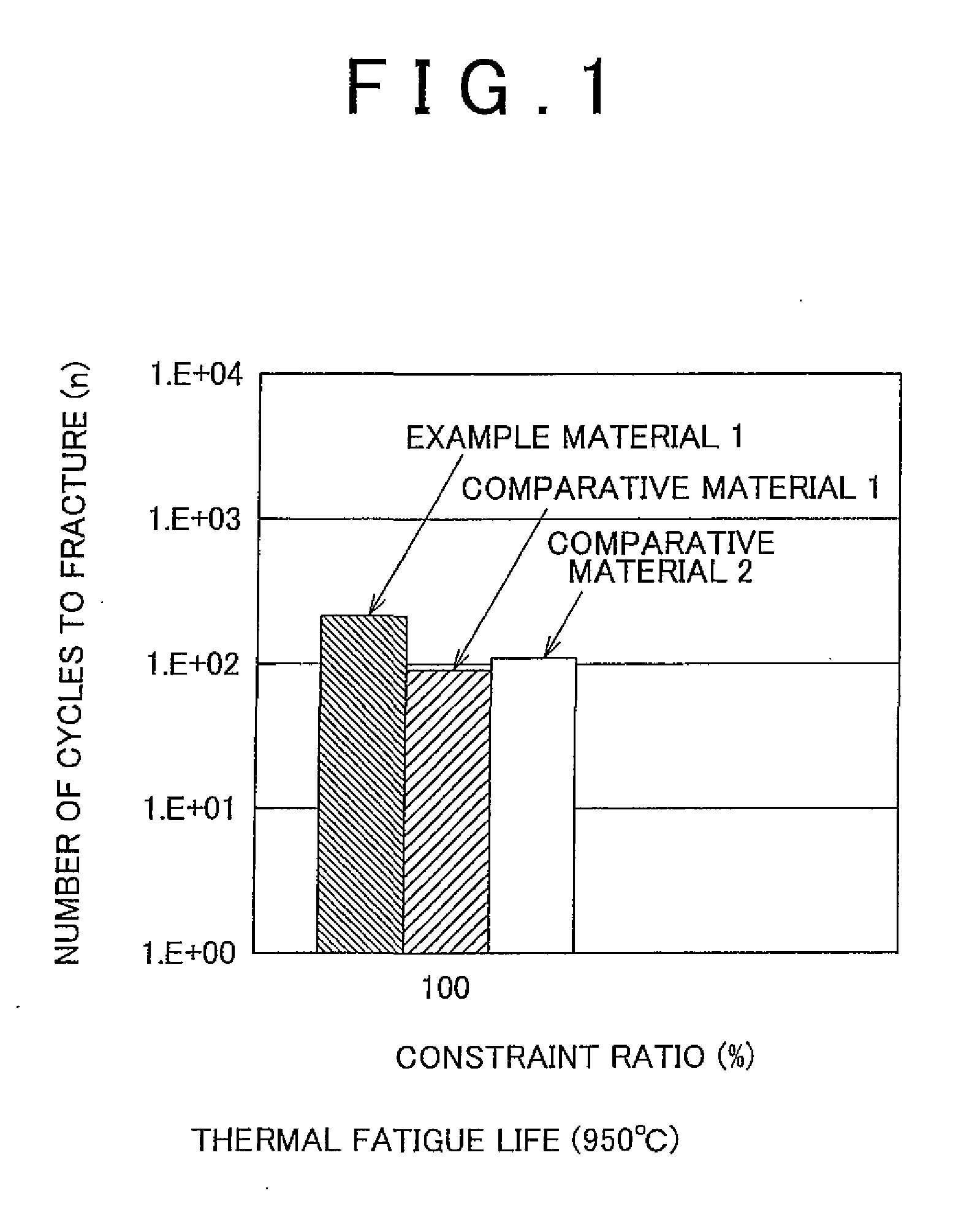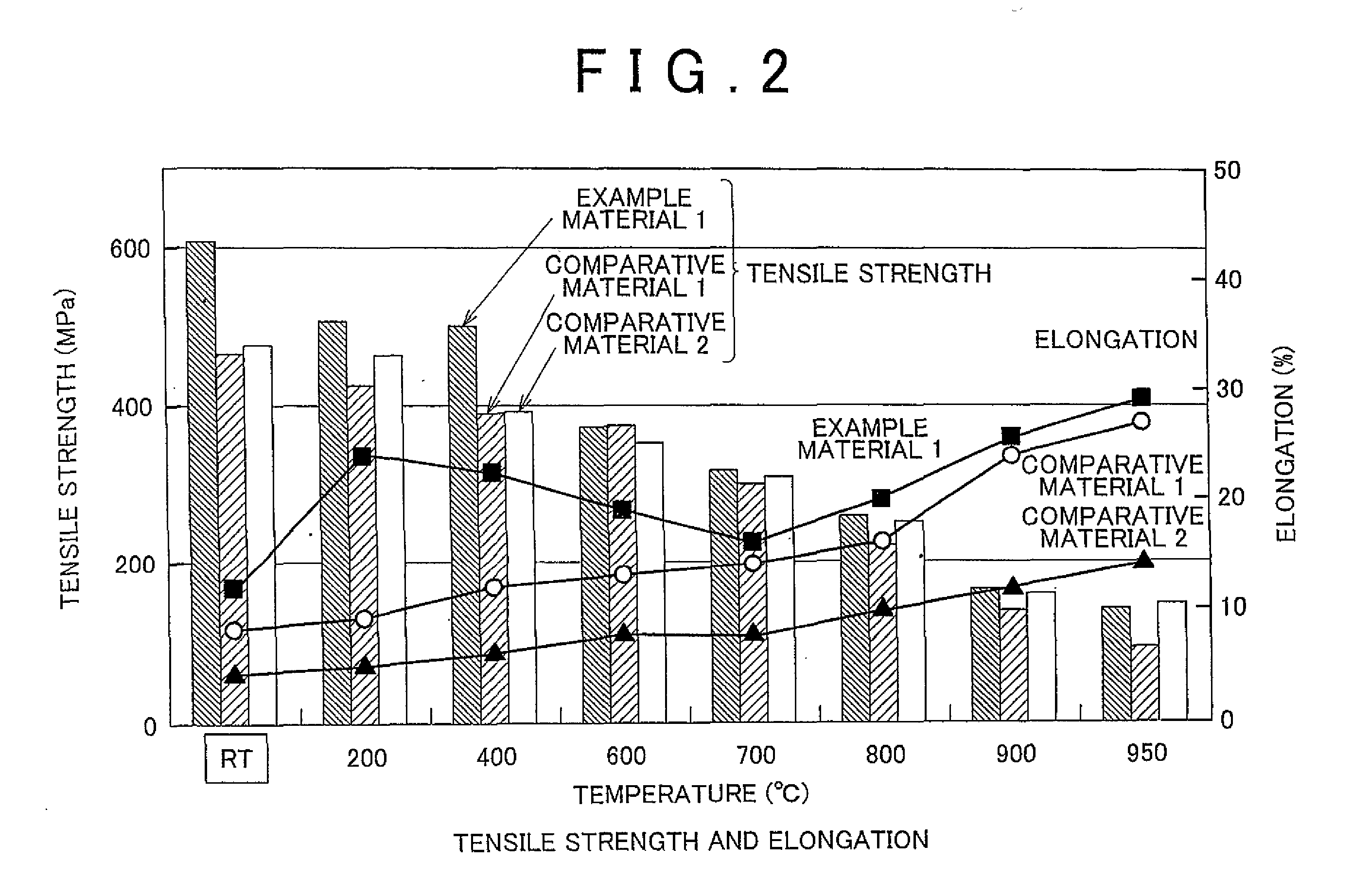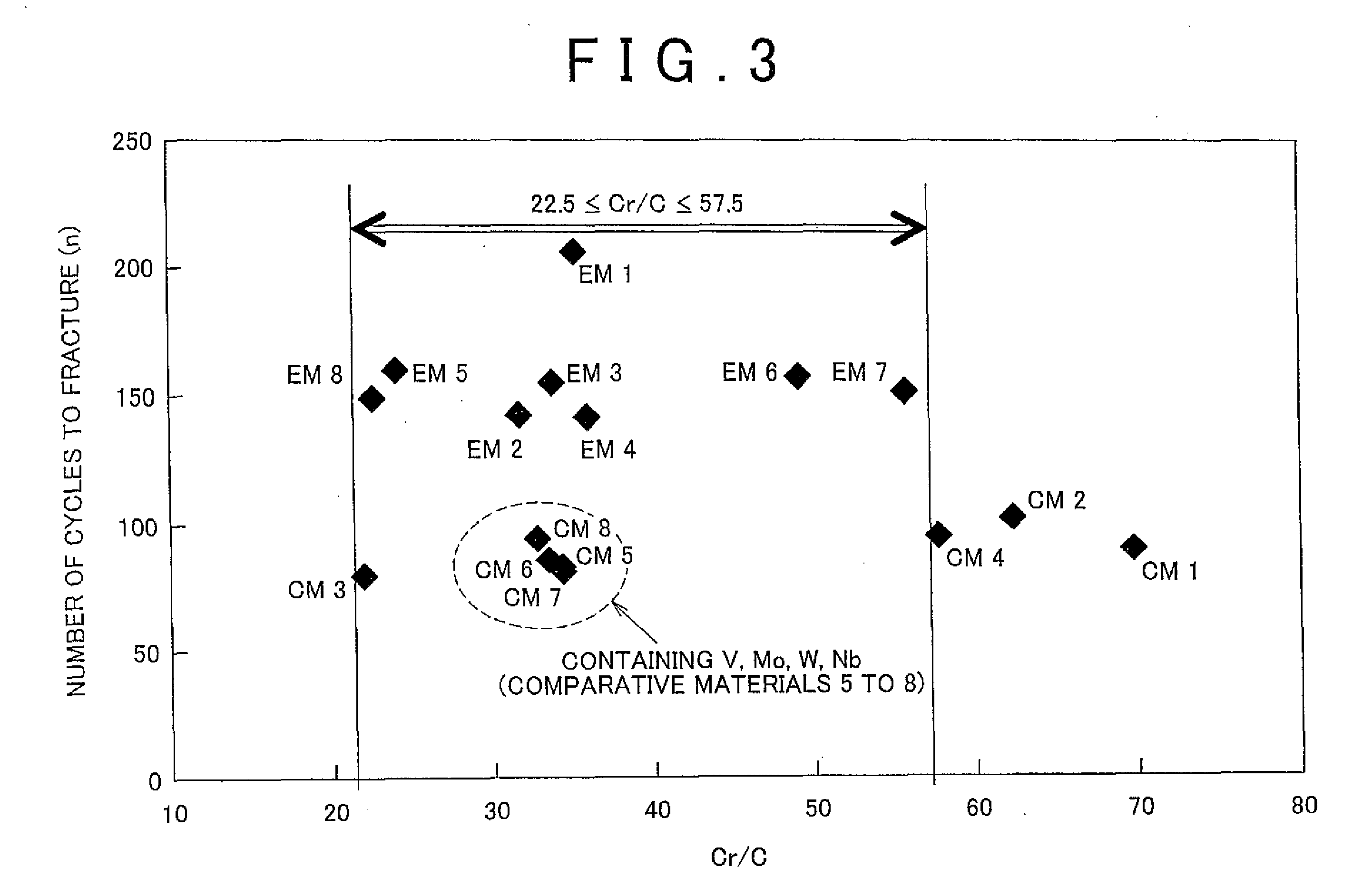Austenitic heat-resistant cast steel
- Summary
- Abstract
- Description
- Claims
- Application Information
AI Technical Summary
Benefits of technology
Problems solved by technology
Method used
Image
Examples
example 1
[0049]Test materials (Example Material 1, Comparative Materials 1 and 2) for each of the austenitic heat-resistant cast steels having the compositions shown in Table 1 and including iron as a base material were obtained by casting. Casting involved using a 50 kg high-frequency induction furnace to carry out open-air melting, and carrying out deoxidizing treatment with Fe—Si (75 mass %). Comparative Material 1 was a conventional material corresponding to the JIS designation SCH12, and Comparative Material 2 was a conventional material corresponding to the JIS designation SCH22.
[0050]Thermal fatigue tests were carried out on Example Material 1 and Comparative Materials 1 and 2. The results are shown in FIG. 1. In this thermal fatigue test, which was conducted with an electrohydraulic servo-type thermal fatigue tester, using a test specimen (gauge distance, 15 mm; gauge diameter, 8 mm), thermal expansion and elongation of the test specimen was carried out by heating from a temperature ...
example 2 (
Cr / C Range and Content Range of Carbide-Forming Elements (V, Mo, W, Nb))
[0053]The Cr / C range and the range in content of carbide-forming elements (V, Mo, W, Nb) were verified. Test materials (Example Materials 1 to 8, Comparative Materials 1 to 8) having the compositions shown in Table 2 were obtained by casting in the same way as in Example 1. Thermal fatigue tests were carried out on each of the test materials in the same manner as in Example 1; the number of cycles up to fracture (n) obtained from the tests are shown in Table 2. In addition, FIG. 3 plots, for each test material, the Cr / C value material on the horizontal axis and the number of cycles to fracture (n) on the vertical axis. In FIG. 3, EM 1 to 8 represent Example Materials 1 to 8, and CM 1 to 8 represent Comparative Materials 1 to 8. Also, in Table 2, Example Material 1 and Comparative Materials 1 and 2 are the same test materials as shown in Table 1.
TABLE 2Cycles toOtherfractureCSiMnPSCrNiNelementsCr / C(n)Example Mate...
example 3 (
Carbon Content)
[0055]In iron-based austenitic heat-resistant cast steels, carbon is effective at improving the high-temperature strength and improving the castability. Therefore, in this embodiment, tests were carried out to verify that a carbon content of 0.4 to 0.8% is appropriate. Test materials (Example Materials 9 to 11, Comparative Materials 9 and 10) having the compositions shown in Table 3 were obtained by casting in the same manner as in Example 1. For each test material, spiral test pieces with a cross-sectional shape (9×7 mm) for evaluating melt fluidity were cast at a casting temperature of 1500° C. The results are shown in FIG. 4, in which the horizontal axis represents the carbon content and the vertical axis represents the melt flow length.
TABLE 3CSiMnPSCrNiNComparative Material0.262.11.00.030.0820.46.00.239Comparative Material0.362.01.10.040.1020.56.20.2510Example Material 90.402.01.00.030.1020.86.00.24Example Material 100.561.91.20.030.0821.25.90.22Example Material ...
PUM
| Property | Measurement | Unit |
|---|---|---|
| Fraction | aaaaa | aaaaa |
| Fraction | aaaaa | aaaaa |
| Fraction | aaaaa | aaaaa |
Abstract
Description
Claims
Application Information
 Login to View More
Login to View More - R&D
- Intellectual Property
- Life Sciences
- Materials
- Tech Scout
- Unparalleled Data Quality
- Higher Quality Content
- 60% Fewer Hallucinations
Browse by: Latest US Patents, China's latest patents, Technical Efficacy Thesaurus, Application Domain, Technology Topic, Popular Technical Reports.
© 2025 PatSnap. All rights reserved.Legal|Privacy policy|Modern Slavery Act Transparency Statement|Sitemap|About US| Contact US: help@patsnap.com



